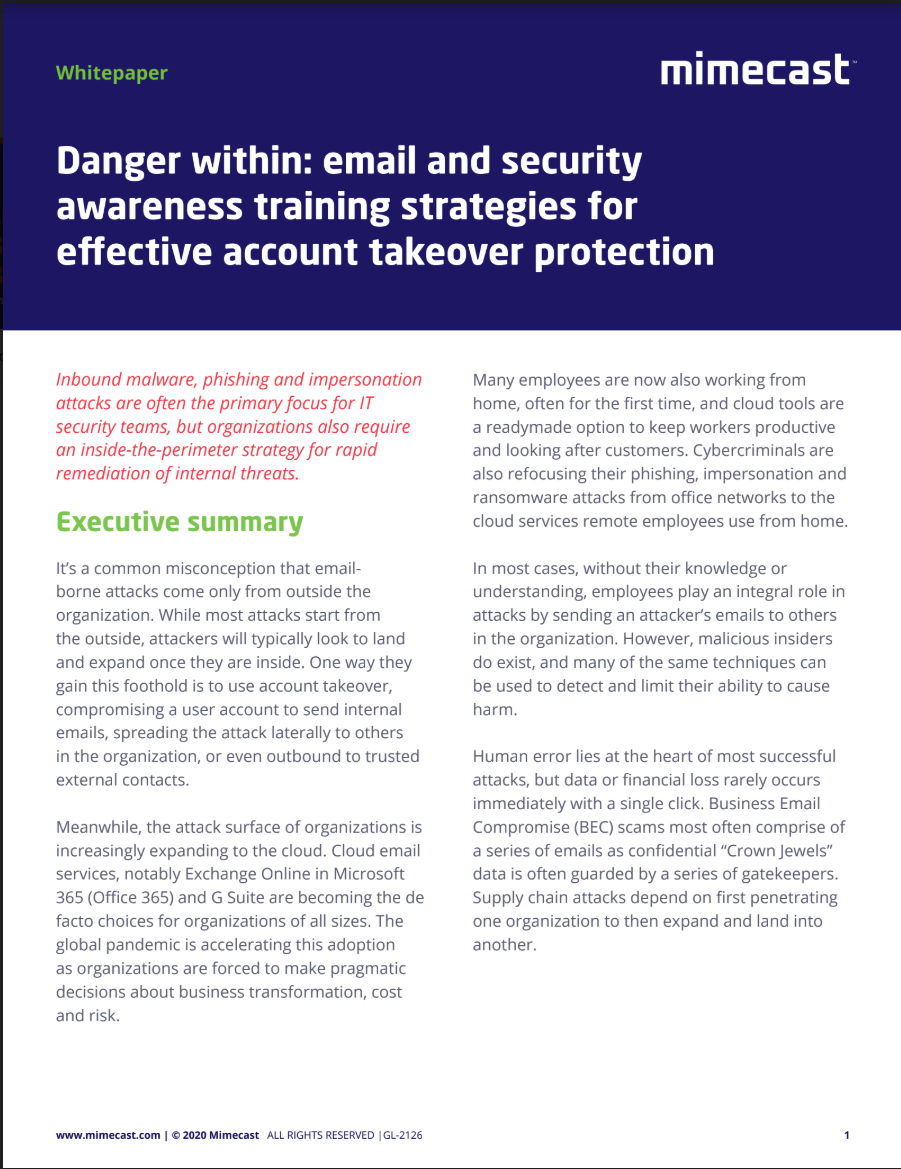Red Hat reveals new software supply chain security pattern
New cross-portfolio capabilities aim to help customers improve security posture and enable DevSecOps


Red Hat has announced a host of new security capabilities across its portfolio of open hybrid cloud technologies, designed to help organisations better mitigate risks and meet compliance requirements across complex IT environments.
Detailing the additions at its Red Hat Summit in Boston, the firm said the enhancements aim to minimize complexity, while also helping customers improve security posture and enable DevSecOps.
RELATED RESOURCE

Security awareness training strategies for account takeover protection
Why you need an inside-the-perimeter strategy for internal threats
Red Hat is introducing a software supply chain security pattern to simplify the process of implementing security features throughout the complete build, deploy and run process.
Delivered via Red Hat OpenShift, patterns will deliver complete stacks as code and will define, build and test the necessary software configurations.
Available as a preview, the software supply chain security pattern uses a Kubernetes-native, continuously integrated pipeline through OpenShift Pipelines and OpenShift GitOps for version control, which Red Hat says will help reduce complexity and save time.
Through Tekton Chains, the pattern will also incorporate Sigstore, an open-source project aimed at making cryptographic signing of code more accessible.
Additionally, in Red Hat Ansible Automation Platform 2.2, Red Hat is introducing a technical preview of Ansible content signing technology which will enable automation teams to validate that the automation content being executed in their enterprise is verified and trusted.
ChannelPro Newsletter
Stay up to date with the latest Channel industry news and analysis with our twice-weekly newsletter
Elsewhere, Red Hat Advanced Cluster Security for Kubernetes brings additional capabilities to help protect container workloads running on edge devices. These include automated DevSecOps in the CI/CD pipeline, threat detection and incident response, as well as network segmentation functionality.
“The enhanced security capabilities across Red Hat’s hybrid cloud portfolio is intended to help deliver less complex operations with high levels of security no matter where an organization operates,” commented Vincent Danen, vice president, Product Security, Red Hat.
“This is Red Hat's commitment to DevSecOps - making security not something bolted on, but a seamless integral part of moving applications from development to production to assist IT teams, both technically and organically.”
Red Hat also unveiled its new Enterprise Linux 9 platform, which utilizes integrity management architecture (IMA), as well as security features such as enhanced security around root privileges, support for the latest cryptographic frameworks with the integration of OpenSSL 3, and bolstered security best practices.
Red Hat said its software supply chain security pattern will be available in the coming months, while RHEL 9 will land in the coming weeks. Red Hat Advanced Cluster Security for Kubernetes is available now.
Dan is a freelance writer and regular contributor to ChannelPro, covering the latest news stories across the IT, technology, and channel landscapes. Topics regularly cover cloud technologies, cyber security, software and operating system guides, and the latest mergers and acquisitions.
A journalism graduate from Leeds Beckett University, he combines a passion for the written word with a keen interest in the latest technology and its influence in an increasingly connected world.
He started writing for ChannelPro back in 2016, focusing on a mixture of news and technology guides, before becoming a regular contributor to ITPro. Elsewhere, he has previously written news and features across a range of other topics, including sport, music, and general news.
-
 Should AI PCs be part of your next hardware refresh?
Should AI PCs be part of your next hardware refresh?AI PCs are fast becoming a business staple and a surefire way to future-proof your business
By Bobby Hellard Published
-
 Westcon-Comstor and Vectra AI launch brace of new channel initiatives
Westcon-Comstor and Vectra AI launch brace of new channel initiativesNews Westcon-Comstor and Vectra AI have announced the launch of two new channel growth initiatives focused on the managed security service provider (MSSP) space and AWS Marketplace.
By Daniel Todd Published